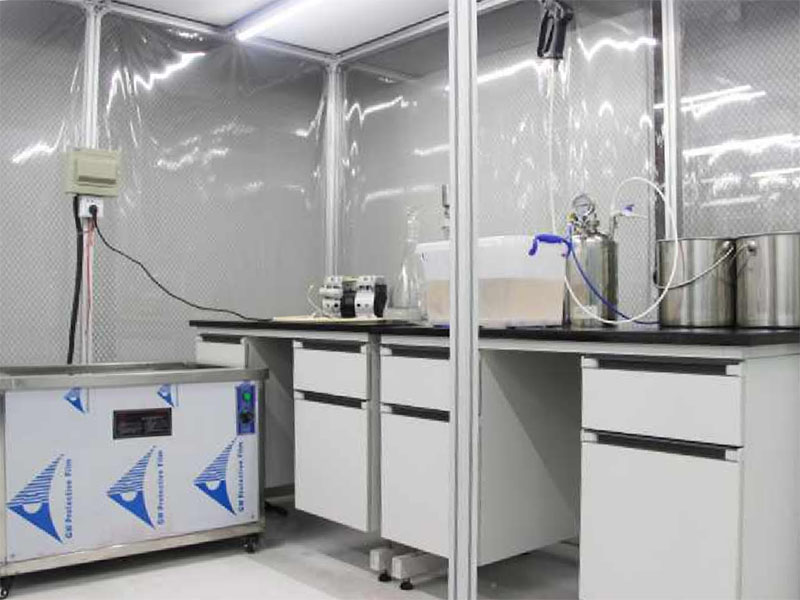




























MTT provides professional particle cleanliness testing to strictly control product quality.

| Project Overview
Cleanliness refers to the degree of contamination of specific areas of parts, assemblies, or complete machines by impurities. It is expressed by the mass, size, and quantity of contaminant particles collected from specified characteristic locations using prescribed methods. “Specified locations” refer to characteristic areas that directly affect the reliability of the product. “Impurities” include all contaminants that remain from the processes of product design, manufacturing, transportation, usage, and maintenance, as well as those introduced externally or generated within the system itself.
The particulate cleanliness test is a key inspection item used to evaluate the degree of contamination of specific parts of parts, assemblies, and complete machines by impurities. This item collects impurity particles from specified characteristic parts through a specified method and analyzes their mass, size, and quantity to determine whether the cleanliness of the product meets the standard requirements. Cleanliness is crucial for ensuring the performance, service life, and reliability of products, especially in industries with high-precision and high-reliability requirements such as electronic manufacturing, automotive electronics, semiconductors, and aerospace.
| Test Objective
The purpose of ensuring cleanliness is to enable the product to reach the specified service life and prevent the product from shortening its service life due to contamination during the manufacturing, use, and maintenance processes. By conducting cleanliness testing and establishing strict limits, the damage caused by particulate wear can be significantly reduced, thereby extending the overall service life and reliability of equipment. This process minimizes risks such as filter element clogging, reduced circuit flow, abnormal wear of sealing materials and diaphragms, unreliable operation due to heavy scale buildup, as well as malfunctions or burnout of solenoid valves. Hence, cleanliness control holds particularly critical significance.
| Testing Standards
ISO 16232, VDA 19.1, PV 3370, etc.
| Service Products / Fields
The test objects of the particulate cleanliness test are extensive, covering multiple industries with high-precision and high-reliability requirements, mainly including:
Electronic manufacturing: Test the cleanliness of products such as electronic components and printed circuit boards to ensure their performance and reliability.
Automotive electronics: Evaluate the cleanliness of products such as automotive parts, engine systems, and fuel systems to prevent failures and malfunctions caused by impurity contamination.
Semiconductors: Test the cleanliness of products such as semiconductor materials, chips, and packages to ensure their high precision and high reliability.
Aerospace: Evaluate the cleanliness of products such as aerospace vehicle parts, engines, and hydraulic systems to ensure their flight safety and performance.
Other fields: Such as medical equipment, precision instruments, optical components, etc., also need to conduct particulate cleanliness tests to ensure their performance and reliability.
| Testing Items
1. Particulate cleanliness testing of components
2. Particle size analysis of cleanliness contaminants
3. Component analysis of contaminants
| Testing Methods
Using methods such as pressure rinsing and ultrasonic cleaning, contaminants are first extracted into a designated liquid. The liquid is then filtered to collect impurities on a membrane, followed by drying and weighing. Particle size is measured under a microscope, or composition analysis is performed using SEM combined with EDS.
| Configuration of the Cleanliness Laboratory
In summary, the particulate cleanliness test is a crucial quality inspection item, which is of great significance for ensuring the performance, service life, and reliability of products. By following strict test standards and adopting advanced testing techniques, the cleanliness level of products can be accurately evaluated, providing strong support for optimizing the manufacturing process and improving product quality.
| MTT Advantages
1. Professional Team: A team of highly experienced testing engineers and technical experts.
2. Advanced Equipment: Equipped with internationally leading testing instruments to ensure accuracy and reliability of results.
3. Efficient Service: Rapidly respond to customer needs and provide one-stop, high-efficiency inspection services.
4. Authoritative Certification: The laboratory is certified by ISO/IEC 17025, ensuring that test reports have international credibility.